‘Mad World: An Oral History of New Wave Artists and Songs That Defined the 1980s’ is a brand new book that covers the music of the MTV Generation.
Written by New Jersey born Duranie Lori Majewski and LA based Glaswegian Jonathan Bernstein, ‘Mad World’ includes many of the bands that formed part of the post-punk British Invasion of the US which the Americans later referred to as New Wave. Very different from the British definition of New Wave which included acts such as BLONDIE, THE PRETENDERS, X-RAY SPEX and THE POLICE, the Stateside classification threw in Synth Britannia, New Romantics, Young Soul Rebels, Goths, Antipodean funk rockers and refugees from The Bromley Contingent!
Regardless of the seemingly incongruous acts being lumped together, what New Wave in the US did was enlighten a whole group of impressionable teenagers about a musical world that artistically and stylistically had more to offer than the turgid home grown rock of bands like BOSTON, REO SPEEDWAGON, STYX, TOTO and JOURNEY.
‘Mad World: An Oral History of New Wave Artists and Songs That Defined the 1980s’ features a foreword by DURAN DURAN’s Nick Rhodes and while not definitive, ‘Mad World’ delves into the spirit, the politics and the heartache behind some of the greatest songs in popular culture, regardless of genre. With the publication of the book in North America and a UK edition scheduled for Autumn 2014, co-author Lori Majewski gave a fascinating American viewpoint on Synth Britannia and much more…
I understand that this book was partly inspired by the advent of Grunge?
Jonathan Bernstein and I met during Grunge when we both worked at Spin Magazine which in the US, used to be a real competitor to Rolling Stone, although how it’s evolved now as Rolling Stone is more of a veteran magazine while Spin is more indie. But back then, it was neck-and-neck, a bit like how NME and Melody Maker were in the UK. I was just starting out in the business and wanted to work on a music magazine.
Unfortunately for me who grew up an Anglophile and liked electronic music, by the early 90s, electronic music was no longer in vogue and even a dirty word; it was really gauche to use synthesizers! Grunge with its guitars and feedback, it was dirty compared with the pretty electronic sound that we loved in New Wave.
I kept it to myself because I was at Spin, but then I heard Jonathan talking about ‘The Lexicon Of Love’ by ABC being his favourite record… it was like I could hear angels singing because I thought “OH MY GOD! Somebody understands that time in music!” because nobody wanted to talk about it anymore. We were kinda nerdy for even liking it, we weren’t cool at Spin. So we became best friends.
So how long has ‘Mad World’ been in the making and what has the journey been like?
It wasn’t until 18 months ago when we read an article with Gary Kemp from SPANDAU BALLET. He was talking about the song ‘True’, the story behind it, all the different influences and what the lyrics meant. We called each other and thought “Wow! Imagine if we could do this kind of article with all of our favourite songs?” That’s how ‘Mad World’ really evolved.
We were going to do the stories behind the songs but as we interviewed the artists, it turned into so much more… it was about the songs, the journeys to making those seminal tracks, how those tracks changed their lives and how sometimes the success strangled artists. Take A-HA; when I interviewed Mags, he said “everyone knows ‘Take On Me’ but I’m like a dad with lots of kids, don’t just like one of my kids, you have to like all of them!”
We also had a cultural conversation with these artists because they talked about The Cold War and Thatcherism. There were some bands like DURAN DURAN who said they “wanted to be the band that you danced to when the bomb drops”. Others like TEARS FOR FEARS wanted to explore that darker side and the psychological melancholy, which is why our book is called ‘Mad World’.
We wanted to do it decades ago, but we could only have done ‘Mad World’ now when these artists were ready to tell their stories of their careers. Plus we had to wait until a time when this kind of music was back in vogue, because no-one would have bought it even five years ago.
How would describe the way you and Jonathan’s very different dynamics combined to produce ‘Mad World’?
Jonathan is 10 years older… he’s 52, I’m 43; he’s Scottish so he was raised on the critical British music press so he’s much more curmudgeonly while during New Wave, I was a wide-eyed American teen who couldn’t get enough of MTV. So I was a fan and he was a critic… but where we meet is we both LOVE this stuff! He loves it from a critical view and he was like “Gosh, it took me a long time to realise it but this stuff is good and influential!” whereas I just bathe in it; I love DURAN DURAN and DEPECHE MODE and built my entire life around that *laughs*
I’m particularly fascinated about how Americans regarded the synthesizer as an instrument and this frequent reference to it being a keyboard, as if there was some kind of denial about it being a real instrument?
From where I sit, I think the synthesizer is essential to my favourite records. The first big record that used the synthesizer I ever heard was Gary Numan’s ‘Cars’. At that time during the turn of the decade, ’79 going into ’80 here in America, I was listening to AIR SUPPLY, Olivia Newton-John and the ‘Grease’ soundtrack! My father was into Warren Zevon. The thing is, Americans really hated disco after a while so when I first heard ‘Cars’, it was unlike anything I’d ever heard. It sounded like the future, it sounded like the space age. You have to remember not everyone was that open and a lot of people I went to school with went “that’s not music”. And just the fact that it was called a synthesizer… it’s synthesized, it’s not real!
They thought it had no skill whereas the stuff we came up on like JOURNEY and FOREIGNER, they were bands that played guitars and it was real masculine stuff! So someone like Gary Numan comes along, he’s a one-man band thanks to a synthesizer and he’s wearing make-up!
You see, David Bowie was not as big in the US as he was in the UK at the time. So you put all that together and no-one here really knew Numan was pretty much born of the rib of Bowie. So people thought it was sissy stuff and uncool… and he’s wearing make-up and making synthesized sounds! So Americans were very suspicious of it.
How would you describe the impact of Gary Numan and THE HUMAN LEAGUE in the US during the first wave of UK synth artists?
In the Europe, you also had ULTRAVOX, OMD plus of course KRAFTWERK. Gary Numan was the first to really make it big and mainstream so in the US, he opened the door for all that. But when THE HUMAN LEAGUE and EURYTHMICS came on the scene with ‘Don’t You Want Me?’ and ‘Sweet Dreams (Are Made Of This)’, I just felt “WOW! THINGS ARE CHANGING!”.
The reason we cover ‘Being Boiled’ in the book is an inconvenience of the fact that Phil Oakey didn’t want to talk to us, that was really disappointing. I was thinking “Do we even have a book without ‘Don’t You Want Me?’…?”; but then talking to Martyn Ware, he chatted about his beginnings with THE HUMAN LEAGUE. I realised ‘Being Boiled’ was the boiler plate for so many of the records that came afterwards; DURAN DURAN, OMD and Vince Clarke all talk about ‘Being Boiled’. So we may not have the story you expect with ‘Don’t You Want Me?’, but we have one of the beginning stories of the entire era.
There was still a very macho rockist attitude at the time… I recall John Cougar making some quite homophobic comments about SOFT CELL in Smash Hits!
Really? It’s interesting, as a young girl I didn’t think straight or gay, I was just thinking love. Music has such an emotional impact on you anyway but especially if you are a young person. I just felt that music opened up my eyes and heart to things that I hadn’t previously been exposed to. And that’s why I fell in love with DURAN DURAN… yes, it helped that they were good looking but they dressed so well and they were so interesting.
But you compare that to the guy at school who may be the equivalent of a John Cougar in the jeans and T-shirt. That may work on some girls but that’s your average guy to me, whereas you had DURAN DURAN on these exotic beaches, wearing these fantastic clothes and having these great accents. And Boy George, I didn’t think if he was straight or gay, I just thought he was beautiful. At the time, boys looked like girls and girls looked like boys but it didn’t necessarily mean they were gay. SPANDAU BALLET dressed up and sometime wore as much make-up as LIMAHL did. But he said at that time, you just didn’t talk about… but he was not in the closet either.
I think we were so much more progressive back then we are now. During the Grammys this year, we had Macklemore standing up for gay rights. But back in the 80s, you didn’t need a straight white rapper to do that because you had gay pop stars in the charts.
OMD are an interesting conundrum as they were part of that first wave yet didn’t make it at the time, but they then made progress later when they supported THOMPSON TWINS and THE POWER STATION before ‘If You Leave’ was a hit?
OMD are a good example of where the difference between me and Jonathan is vast. Jonathan loved them right from the beginning and really understood their KRAFTWERK pedigree. Me? I happened by accident to get into OMD because I had tickets to see THE POWER STATION.
SPANDAU BALLET who were due to support had to pull out of the tour as Steve Norman had broken his leg! So I saw OMD with them instead and they played this song from a new movie called ‘Pretty In Pink’. I was thinking “who is this guy with the crazy dance moves?”, but I could see he was really into it and I loved the music.
So I went backwards from ‘If You Leave’ and discovered ‘Architecture & Morality’; I fell in love with the pair of love songs about Joan Of Arc and I was like “THIS IS JUST INCREDIBLE!”. To this day, OMD are definitely in my top three favourite bands. I saw them in concert this past summer and they were my favourite of the year. I still think record after record, they make fantastic music and I say in the book, if no other band existed in the genre of New Wave, I’d be happy to hang my hat entirely on just OMD and say they are a genre unto themselves because I think they are that spectacular a group!
Now, with OMD’s early stuff compared with the later stuff, I think it’s apples and oranges because with ‘If You Leave’, it’s from ‘Pretty In Pink’ which is my favourite of the John Hughes films. I have a soft spot for Ducky… which girl who grew up in the 80s didn’t? I grew up with freckles so I really loved the fact that Molly Ringwald was considered a really beautiful girl. Until her, there were no pretty teenage girls I could look up to, so all of that is wrapped up in ‘If You Leave’. It’s definitely a part of the whole John Hughes nostalgia thing. But when I think of early OMD, I think of ground breaking seminal electronic music.
It’s interesting you feature THE NORMAL in the book, but not KRAFTWERK. KRAFTWERK seem to have made more of a cultural impact on the US urban dance scene rather than New Wave pop?
We look at KRAFTWERK as being a parent figure to this era rather then being a part of it itself. So when I think about who inspired all of these artists, it’s KRAFTWERK, ROXY MUSIC, T-REX, CHIC and David Bowie. Then you put it through the punk blender because none of these New Wave artists would have picked up an instrument if it wasn’t for punk. Bowie, Roxy and Bolan were too much on a pedestal, you could never imagine emulating them because they were true rock stars.
But when punk and KRAFTWERK came around, two things happened; punk made you feel you could do it with just three chords while KRAFTWERK taught you that you didn’t even need a band, just one piece of equipment which was the synthesizer. So that’s why there isn’t a chapter on KRAFTWERK, but they are mentioned many times throughout the book.
The chat with Peter Hook must have been quite revealing considering his Joyless Division with NEW ORDER?
Peter Hook was one of my first interviews for the book actually and he is one of my favourites, I probably talked to him about five times. He was very generous with his time, his memories and he was very candid. Some people think he’s overly angry about the situation but as he says in the book, he gave 30 years of his life to the band and he feels really burnt by it. He said it’s a divorce and as someone who’s been through one, I wasn’t married for over 30 years but I can’t imagine what it must feel like; he calls the new version of NEW ORDER “New Odour”. I really liked talking to Peter and one of the reasons is because he is proud of his legacy and loves his own music, both as JOY DIVISION and NEW ORDER.
Now, when I talked to like Vince Clarke, it was really hard to get him to talk about his own music. But once I started asking him about his heroes, he completely opened up about people like Simon & Garfunkel and THE CURE. So he had no problem talking about that, but had a problem talking about his own music because it’s too close to him. Peter Hook is not like that, he is enjoying preserving his legacy and you can see that; he’s written two books on his career so far and has another on the way about NEW ORDER. I think he’s a great storyteller.
Did you talk to Bernard Sumner as well?
Yes, I also interviewed Bernard but he really avoided as much as possible talking about Peter Hook and the problems they had. He said NEW ORDER’s music, particularly ‘Blue Monday’ has been passed down through the family like a gold watch, meaning people who are in their 40s and 50s have passed the music down to their teenage kids who now find it cool. The JOY DIVISION and NEW ORDER chapters are two of my favourites.
My heart hurts for Peter because I’m a very sensitive person too and I can tell that this whole situation with Bernard has broken his heart. However, this is not something that happened recently, this has been a slow boil for many years. Peter said they only shared one phone call over 35 years and that was because Bernard’s car had a flat battery and he need a lift to a gig!
This first wave paved the way for prettier bands like DURAN DURAN and DEPECHE MODE plus electro-soul hybrids like HEAVEN 17, EURYTHMICS and YAZOO in the US. Was there a big difference in these acts that made them more appealing to Americans? Was it really just down to videos and MTV?
A good video is a good video, but a great video can’t rescue a crappy song! So it was much more than that… the truth of the matter is, DURAN DURAN became as big as they are in the United States because they spent many months touring here. In 1984 on their biggest tour, they spent half the year here. So America got used to these bands whereas HEAVEN 17 never set foot here.
Martyn Ware talks about HEAVEN 17 never coming to the US and thinks that hurt them. HEAVEN 17, YAZOO and a few of the others, they appeared on video and it was so new, it got them all around the world at once. So they thought “MTV in America play videos, why do they have to see us live? We don’t need to go to Australia, we’ll send them the video!”
If HEAVEN 17 had toured and put in the time, they had the songs that would have made them big here… ‘Temptation’ had a lot of potential in the US. YAZOO were sizeable here and not just with ‘Only You’. When I was in High School, everyone loved ‘Upstairs at Eric’s’ and they played ‘Situation’ to death.
What about DEPECHE MODE?
DEPECHE MODE are interesting in that they’re really two bands… in this book, we talk about the early Vince Clarke Depeche that was really, a different group to the one that came over towards the end of the decade and sold out the Rose Bowl. And when Vince Clarke left, they really didn’t know what was going to happen because he wrote all the songs and produced.
It took Martin Gore a few albums to step up; ‘People Are People’ was a slight hit here but it wasn’t until they really put the time in to breaking in America that they made it. In fact, their first huge hit here wasn’t until ‘Enjoy The Silence’ in 1990. To me, DEPECHE MODE and THE CURE are the Holy pair of New Wave graduates who then went into the alternative music scene and started playing stadiums. I believe if THE SMITHS had stuck it out, they would have been doing so too.
With DURAN DURAN and their sound particularly, were their disco and rock elements also a factor in their American appeal in that they were not a pure synthesizer group?
I think you’re right. I’m the world’s biggest Duranie and I have to say, I think the magic is that the five members made incredible music and were the best at what they did. Nick Rhodes was a great synthesizer player and a producer behind the scenes in putting these records together; Simon Le Bon has an interesting and unique voice; John Taylor is a hell of a bassist who many contemporary artists look up to; you had Roger Taylor who Mark Ronson and Nile Rodgers both talk about what a strong drummer he is; and then there’s Andy Taylor who Mark Ronson says gave “a Steve Jones element” to the band. So you have this confluence of disco and synth sound with the crazy rock guitar element, it was a unique combination. With DURAN DURAN, you had the best of all worlds. You didn’t have that in SPANDAU BALLET!
It’s interesting you say that, I briefly spoke to John Taylor once and asked him when he realised DURAN DURAN were going to trump SPANDAU BALLET and he replied “To Cut A Long Story Short”…
…he said to me that he ran out and bought that record, listened to it and was like “alright, nothing to worry about”. A thing that come across in the book is how competitive all of these groups were. Duran were super competitive with Spandau and that gets a lot of ink.
But also, DURAN DURAN were worried about ABC and John Taylor says in the book how nervous he was when ‘The Lexicon Of Love’ came out. And ABC were looking over their shoulder at THE HUMAN LEAGUE. And Gary Numan was competing with OMD. Back then, there was a race and ABC’s Martin Fry talks a lot about that race to put out the freshest, coolest, newest sounding record. And they were all competing in it.
They were all very much trying to come up with the next sound. So it’s interesting with ‘To Cut A Long Story Short’; SPANDAU BALLET started as a New Romantic band, then they come out with this funk dancefloor hit ‘Chant No1’, AND THEN became much more of a ballads band with ‘True’.
Look at today’s music scene… no bands are blowing up the formula between records like they did then! That’s what made it so exciting and so interesting. John Taylor went rushing out to buy ‘To Cut A Long Story Short’ because he had no idea what it was going to sound like; whereas today, when Katy Perry puts out a record, you kinda know how it’s going to sound! And so many of today’s artists use the same producer so they do sound the same! *laughs*
ULTRAVOX who are in the book never made it in America despite their cinematic videos. Were they just too European and too old for the MTV Generation?
It’s funny, with ULTRAVOX, I think Americans had no idea where Vienna even was, so they couldn’t get into it! *laughs*
But for us Anglophiles who understood and liked DURAN DURAN and SPANDAU BALLET, it opened up Europe to us. The first time I ever went to England was to see a DURAN DURAN concert. Nick Rhodes said the same thing about Bowie, he had never even left the country but through Bowie, he felt he could understand what it could be like to go to Berlin or Paris. In general, only 2 out of 10 Americans even had a passport and that’s true to this day. Andrew Farriss of INXS said that people in America were getting them confused and thinking they were Austrian instead of Australian! The accents couldn’t be more different! *laughs*
But Midge Ure is one of those really important driving forces of the entire movement because not only was he in ULTRAVOX, but he was a big part of VISAGE and co-wrote ‘Do They Know It’s Christmas?’ so he had to be in this book 🙂
How do you subscribe to the thought that a number of these British acts that made it huge in America were effectively softened versions of acts that came before eg DURAN DURAN with JAPAN, and PET SHOP BOYS with SOFT CELL?
I’ve never thought of PET SHOP BOYS ever as a softened version of SOFT CELL, but I can see where you’re coming from. The first time I heard ‘West End Girls’, it blew my mind, I’d never heard anything like it before and I still haven’t. SOFT CELL’s ‘Tainted Love’ was a tremendous hit here, it’s up there with ‘Sweet Dreams’, ‘Cars’ and ‘Don’t You Want Me?’ but SOFT CELL never really followed it up here.
As far as DURAN DURAN and JAPAN went, it’s like Gary Numan and David Bowie. I didn’t know until years later about JAPAN because they weren’t big here. But I remember listening to them and thinking “Wow! I can really hear DURAN DURAN in this”.
Now Duran may have started out with that influence but let’s not forget about SPANDAU BALLET. DURAN DURAN may have blown them out of the water eventually, but they have Spandau to thank. If there wasn’t a Blitz Club, there wouldn’t have been a Rum Runner so if there wasn’t a SPANDAU BALLET, there wouldn’t have been a DURAN DURAN. But Duran kept it going and they’re the elder statesmen of the entire era.
I loved JAPAN but they were too bloody minded and David Sylvian was too arty to want to become pop stars…
DURAN DURAN never minded and wanted to embrace the mainstream. They were huge and maximised every opportunity whether it was videos or their good looks or the fact that they were good songwriters and musicians. They were a team and shared songwriting credits on every song.
SPANDAU BALLET broke in two because Gary Kemp was being sued by three members of the band for royalties.
DURAN DURAN never had to worry about that kind of thing. I’m really proud to be a Duranie because they’re survivors. Have you seen DURAN DURAN live?
Oh yes, several times. I didn’t see them until 1988 unfortunately, but I went to one of the 2004 shows at Wembley Arena and it is still one of the best concerts I’ve ever been to!
I was at every single one, I loved those Wembley shows! OH MY GOD! They blew me away!
This will make you laugh, one of the things about being a male DURAN DURAN fan, you didn’t admit it when you were younger. But you don’t have a problem with it when you’re older. So when me and my mate got to the Wembley gig, we thought “where shall we stand? Oh, let’s stand towards the left” because of course, that was where all the girls were… waiting for John Taylor! 😉
You’re right, guys did not admit to liking them when they were younger but now you go to a Duran concert and there tons of guys there… and they’re not just there to hold the wife’s handbag! *laughs*
Who’d have thought the majority of the acts that feature in ‘Mad World’ are still active as brands and live performers. So should these artists keep touring and how do you feel about them recording new material?
When we interviewed Andy McCluskey, he feels that a lot of bands from this era shouldn’t be doing new music because they have nothing new to say. He felt that when OMD made the last two albums, they had to dig deep to really challenge themselves to say it was not to make a quick buck off the audience. That’s why Tom Bailey has to this day not done an acoustic album of THOMPSON TWINS hits or a reunion tour because he feels he doesn’t have it in him… although for the first time, he’s going to be touring solo in the US with Midge Ure and Howard Jones.
But I look at a band like DURAN DURAN; Simon Le Bon said to me that they are “career musicians”, they would not know what to do with themselves if they did not have a tour to do or a studio to go into… they are driven to make new music. Some people think the record ‘Red Carpet Massacre’ with Timbaland was a mistake, but it’s one of my favourites… I’m really look up to Duran because they take chances. I always say hats off to acts like them and U2 for trying new things.
Of course, I see why Duranies were so excited about the Mark Ronson produced ‘All You Need Is Now’ album because it brought them back to ‘Rio’ and that sound. As long as bands are inspired to keep going and can, they should. INXS cannot keep going; they called it a day last year and Andrew Farriss said he has a hard time writing with someone who isn’t Michael Hutchence. Imagine working with someone for so long and suddenly they’re not there anymore?
So the bands that do continue, by and large, none of them disappoint me. I like some records better than others but even if I don’t like what they produce, I love the spirit with which they produce it.
I guess the end result of this New Wave legacy in America is that there’s great cinema like ‘Donnie Darko’, but also terrible new bands like FUTURE ISLANDS…
…I’m not a huge fan of FUTURE ISLANDS either… I was on my way to do a radio interview and I could not remember what they were called, I was thinking “Fantasy Islands? No, that’s not right!” *laughs*
The thing is, when I saw FUTURE ISLANDS on ‘The David Letterman Show’, I thought it was a comedian doing a skit on what they thought an 80s New Wave band was like…
…really? That’s so funny, I can see that! *laughs*
So how do you view the long term cultural significance of New Wave?
What I do like is that the sound continues… I like CHVRCHES, I think they’re good. On ‘American Idol’ the other evening, it was ‘80s Night’ and they had DURAN DURAN on there. Even a lot of this EDM is really a direct descendant of New Wave and electronica. Daniel Miller of Mute said that he can’t stand that term EDM aka Electronic Dance Music, but it’s what New Wave sort of was.
So it continues and it’s cool that the artists we love are finally getting recognition for really paving the way 30 years ago. I mean, there was the 90s when nobody would give OMD or Gary Numan a record deal because people thought no-one wanted to hear that music. John Taylor said he would have crawled into a hole in the ground if it wasn’t for Nick Rhodes keeping DURAN DURAN together, because they felt so shunned by popular culture.
What’s nice, whether or not you like EDM, FUTURE ISLANDS or CHVRCHES, is they’re continuing the tradition of the artists we love and allowing them to get their proper due finally. I really hope that in the next few years, DEPECHE MODE get inducted into The Rock ‘N’ Roll Hall Of Fame. It’s about time one of these bands gets properly recognised for ushering in an entire era of amazing electronic music.
Moby, who does the afterword in ‘Mad World’, said to you he’d have liked to have been in DURAN DURAN. I always wanted to be in OMD and still dress like Paul Humphreys circa 1981! Which New Wave band would you have liked to have been in?
This is a hard question… to me DURAN DURAN are so good at what they do, I can’t even imagine being a part of it. Do you know what I mean? Whereas I look at a band like BOW WOW WOW, they had a female singer Annabella Lwin and I talk a lot in the book about how she was my first girl crush. She had a Mohican and she was so freaking cool! It seems like it was a party to be part of BOW WOW WOW although you learn from the book that it was nowhere near a party and that she barely hung out with the guys! But from a distance, it looked really fun to be in BOW WOW WOW?
ELECTRICITYCLUB.CO.UK gives its warmest thanks to Lori Majewski
‘Mad World: An Oral History of New Wave Artists and Songs That Defined the 1980s’ by Lori Majewski and Jonathan Bernstein is published by Abrams Books
https://www.facebook.com/madworldthebook
https://twitter.com/MadWorldBook
Text and Interview by Chi Ming Lai
19th April 2014, updated 3rd February 2019







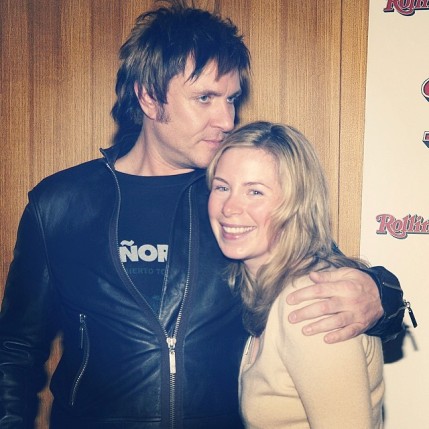











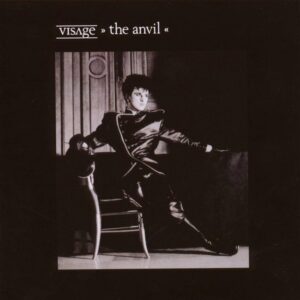









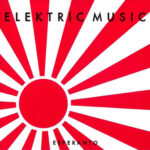


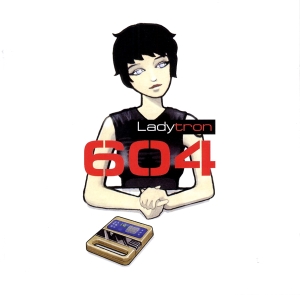


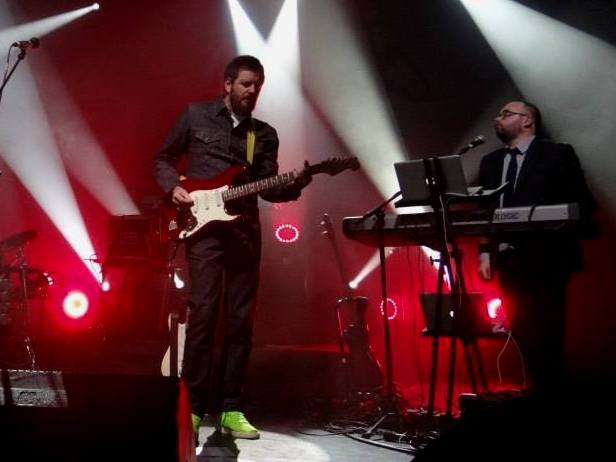
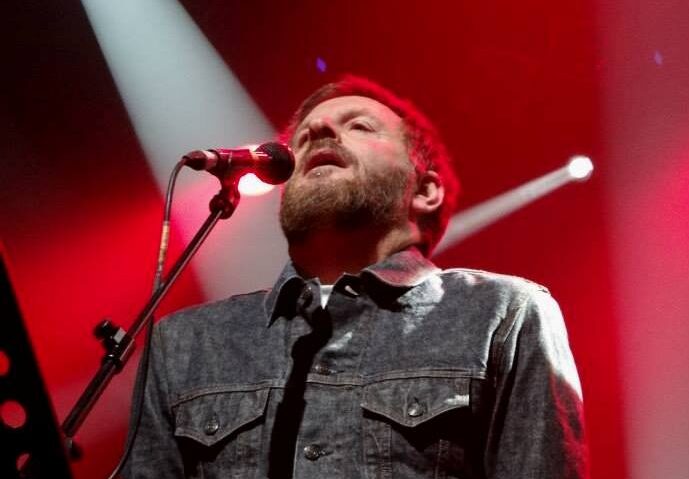
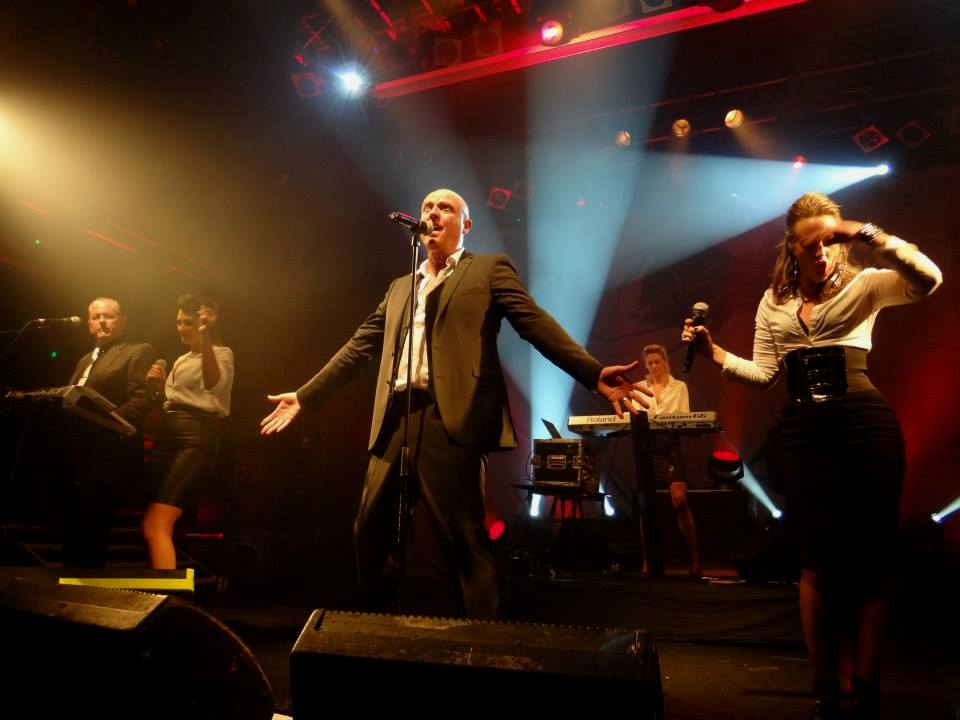














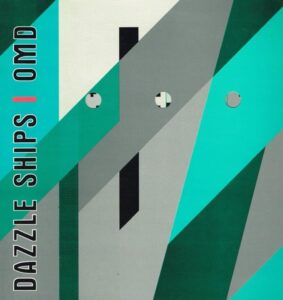
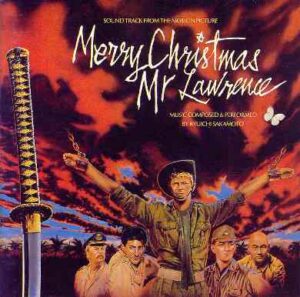
































Follow Us!